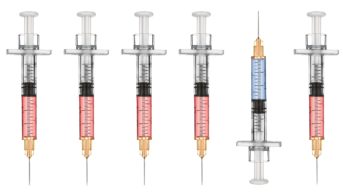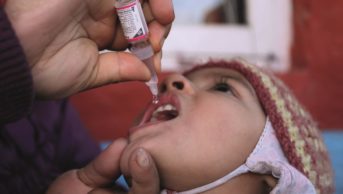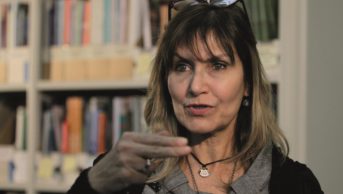
John Zarocostas
Marie-Paule Kieny is World Health Organization (WHO) assistant director-general for health systems and innovation. During 2015–2016, she led WHO’s Ebola research activities and is currently in charge of Zika research and development (R&D), as well as of the preparation of an R&D blueprint to accelerate global research preparedness for future outbreaks. Kieny, who received her PhD in microbiology from the University of Montpellier in south-east France, has published more than 250 articles and reviews, mainly in the areas of infectious diseases, immunology and vaccinology.
What has the Global Action Plan for Influenza Vaccines achieved since it began in 2006?
The global action plan is a ten-year initiative that aims to address the anticipated shortfall in vaccine supply in the event of a pandemic. One of the achievements has been to put on the table at the international level the wide distribution of influenza vaccine production capability, and to advocate and support the establishment of new production capacity in middle- and low-income countries. Of course, during the ten years there has been a big increase in production by the major multinational drug companies, which already had impressive production capacity. But, in addition, we now have 14 mostly upper middle-income countries (Brazil, China, India, Indonesia, Korea, Thailand, Vietnam, Egypt, Iran, Kazakhstan, Romania, Serbia, Mexico and South Africa) where influenza vaccines are already being manufactured or where production will soon begin.
One of the aims of the plan is to have enough pandemic vaccine to immunise 70% of the world’s population with two doses — that would require about 10 billion doses. You are short of this target, with only 6.2 billion doses (up from 1.5 billion in 2006), which is enough to immunise about 45% of the population. How feasible is it to make up for the shortfall and what are the challenges?
We have to assume in our objectives that we will be able to immunise everyone. But, in reality, that is not the case because some people are so remote we cannot get to them. In addition, there is a lot of vaccine hesitancy. I do think we should continue to advocate that there should be enough capacity to immunise the world’s population, and that we will be able to vaccinate as many people who are willing to be vaccinated as possible.
You have made the case that you need the seasonal vaccine capacity to be in place so that, in the event of a pandemic, you are able to access and deploy it fast. Is there a problem with seasonal vaccine capacity?
Yes. Since 2006, the demand for seasonal vaccines has increased, notably in the region of the Americas. But we see that, in the past few years, demand is plateauing and, in some regions, such as Europe, demand is falling. So we have to re-visit whether the capacity model — the assumptions made in 2006 that we needed to have seasonal vaccine production capacity that would be proportional to what would be needed for a pandemic — needs to be revised.
We must look at other technologies that may be able to help increase the production quantity of the vaccines.
After ten years of trying mathematically to increase the uptake of seasonal influenza vaccines, we need to look at whether there are other possibilities or technologies to increase the quantity and availability of the influenza vaccine for pandemic use.
How important is political commitment to ensure vaccine capacity is adequate for a pandemic?
It is very important because it is an investment. There needs to be a commitment to understanding that the purpose of establishing a vaccine capacity is for pandemic preparedness. Only the countries that have managed to keep their commitment have been able to make progress. Let me give you an example. It has a very small production capacity, but in Vietnam we have been working since 2007 on ensuring there is adequate vaccine to distribute in a pandemic. The country has continued with little domestic funding but with a high level of commitment from the government. It has conducted several clinical trials, and developed a potential H5N1 vaccine. It has also worked on a seasonal vaccine each year. Vietnam does not have a commercial product yet, but we expect this will follow in the very near future.
On a much larger scale, one of the largest vaccine manufacturers in the world, the Serum Institute of India, in Pune, has also decided to invest in the production of influenza vaccines. It has worked with a live inactivated vaccine and we have been able to grant the manufacturer a licence. It is conducting the R&D into switching from eggs to cell culture. We are happy to see the diversity of the results obtained.
What would be the vaccine availability and the time lag in the event of an influenza pandemic outbreak? Can a vaccine be produced from the moment the virus is detected, in, say, less than six months?
It is difficult to compress this time with the technologies that are available. This is why we need to explore other models that would not be based on what we do for seasonal vaccines. One approach that might be worth looking at is using DNA vaccine. Traditionally, DNA vaccines are efficacious in animals, but suboptimal in humans. Science has progressed, and it is possible now to have some positive results with DNA vaccine using electroporation. This is like a little pen and, at the point of injection, it gives an electrical pulse that helps the vaccine penetrate the skin. It has been used in clinical trials for the coronavirus that causes Middle East respiratory syndrome, and is also being researched for use in a vaccine for the Zika virus.
What is the efficacy of the vaccines?
The pandemic vaccines were fairly efficacious, but with the seasonal vaccines, efficacy really depends on whether there is a good match between the virus that is circulating in the season and the strain that is in the vaccine. Sometimes the match is not too good. It also depends on the age of the person being vaccinated. The vaccines are usually more efficacious in children and young adults than they are in older people. The efficacy can vary between 30% and 70% year on year.
What are the priority policy issues governments should be looking out for?
First, governments should have a pandemic-preparedness plan so that, in the event of an outbreak, they can deploy it. Second, all countries should have a licensed seasonal influenza vaccine. The regulatory knowledge in each country about which types of vaccine there are is important. There also needs to be continuing investment in looking into how the tools we currently have can be better used, and not to leave it to only a few countries to be part of this research.
What is WHO’s message to the pharmaceutical industry?
It is important to maintain the production of seasonal vaccine because this will remain one of the fundamentals of capacity for handling pandemics. We also need to explore other technologies that would provide some further surge capacity for a pandemic.


